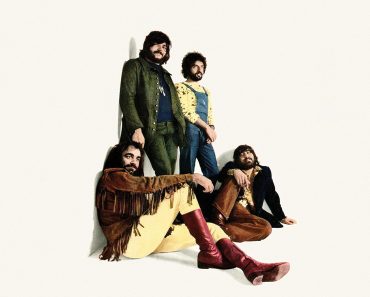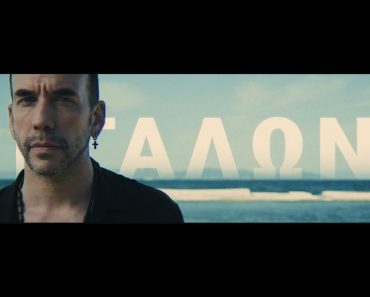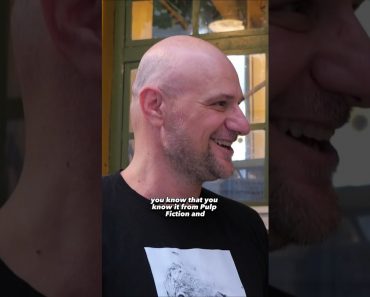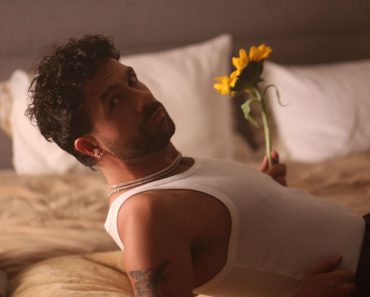Suzana Perić’s masterclass titled “The Journey of Music in a Film” was held on Wednesday, November 5th, at Pavlos Zannas theater. The event took place within the framework of the Thessaloniki Film Festival’s Meet the Future action, which aims to bring forth the up-and-coming Greek professionals from different branches of the film industry. This year’s Meet the Future foregrounds the art of film scoring through the tribute “Music in Motion: The Art of Film Scoring”, welcoming film composers of the younger generation from Greece. Suzana Perić, who has been active as a music editor since 1986, analyzed how music consolidates its place within the timeline of a film production, as well how it can become the focal point of a particular story. The discussion was moderated by Theo Papadimitriou, Assistant Professor at the Film School of the Aristotle University of Thessaloniki.
Theo Papadimitriou provided a brief introduction to Suzana Perić: “It’s a great pleasure for me to introduce you to Suzana Perić, a music editor with vast experience, who has worked in countless productions. If you search her name on iMDB, you will find she was responsible for the music editing in 178 films. She worked in films such as Jonathan Demme’s The Silence of the Lambs, Peter Jackson’s trilogy The Lord of The Rings, Greta Gerwig’s Barbie, Roman Polanski’s The Pianist, among many others. She has also collaborated with huge filmmakers including David Cronenberg, and Martin Scorsese, as well as legendary composers, like Philip Glass, Ennio Morricone, and Alexandre Desplat. But above all, she is a wonderful person.”
Suzana Perić kicked off the masterclass by saying a few phrases in the Greek language: “I’ve started learning your language, but it’s quite difficult. Thank you all for coming.” Suzana Perić expressed her great joy for being in Thessaloniki. “I’m a music editor, a profession mostly found in the USA. I work in Europe as well sometimes. I will try to explain what my role is and why I chose this profession. I will attempt to put my passion for this job into words, and perhaps I’ll manage to inspire some of you through this discussion, delving into the construction of the soundscape in cinema,” she initially said.
Next, an excerpt from an episode from the documentary series Music for the Movies: The Hollywood Sound (1995), directed by Joshua Waletzky, was screened. The documentary in question featured historic film soundtracks, from Franz Waxman’s music in The Bride of Frankenstein to Max Steiner’s compositions in Gone with the Wind. After the excerpt ended, Suzana Perić mentioned that Max Steiner’s decisions in this 1939 film were pioneering. They are also one of the first examples of utilizing music to indicate a hero’s psychological state.
“As in every profession, we develop our own style and open our own paths, depending on the professional relationships we invest in. There are many ways someone can approach the job of music editing. In America, there is a huge difference between the east and the west coast. The systems’ structure is entirely different. In Hollywood, there are many more composers who seek music editors. There are large groups, very well organized. In contrast, New York has many independent filmmakers who function more collectively. This job has developed differently on the two sides of the American continent,” she stated.
Immediately afterwards, she stressed that the job of the music editor starts in the last stages of a film’s production: “If it’s not a musical, our work starts at the end of the shoot. It’s a job that requires a lot of preparation. I go through the script carefully. If it’s based on a novel, short story or article, it goes without saying that I read that too. If I don’t know the director, I carry out detailed research on their work, I watch their every movie and familiarize myself with the filmmaker’s style.”
Suzana Perić continued on, making a special reference to a quote by Roman Polanski. “Polanski had once said that cinema is the sole art form that starts out as a whole, but is later on divided into smaller pieces. So we, the mosaic of people working in a film production, hope to pick up the pieces and put them back together again so as to give the film its original, ideal form.”
Next, she referred to the music editor’s first contact with a new film project: “The first meeting usually includes a screening of the film at a theater in order to watch the film as it is supposed to be seen. There we start constructing the vocabulary of a new music language. The filmmaker, the producers and the composer are all present in this meeting, if the latter has been selected and hired at this stage. Usually, no-one has been hired and that is exactly the job of the music editor: to serve as the eyes and ears of the composer within the room, a representative of some kind. At this point, chances are a temporary score is included in the film, because it’s easier to watch it that way, but perhaps there is nothing at all.”
Suzana Perić then added she prefers to be included throughout every stage of the film’s production, from beginning to end: “This way you can process the cinematic language better, comprehend the core and message of the film, and the reason why the director is making his film. The only way that I, as music editor, can propose any kind of music score is by having this knowledge and experience.”
Referring to JC Chandor’s film All Is Lost as an example of absence of music, she commented: “This wonderful film by JC Chandor is a film revolving around a man lost at sea, trying to survive. A script imbued with deep existential angst, without a single word being uttered! We watched this film without music. Circumstances forced us to respect the silence and solitude. After the screening, we had a meeting with the crew, during which we discussed the role that music would play in this film, which at that stage was in a constant state of flux as the script kept being altered.”
She went on to say that there is a ten-week period after the filmmakers deliver the first rough cut of the film, in which they enjoy complete creative freedom, as defined by contract: “During this period of time, the filmmakers invest in creating a final draft that will shape the film’s final form. This final draft is incredibly important to the director, because the producers will see it and decide if the film is worth the investment.”
On the concept of temp scores, she commented: “Seeing as filmmakers abhor showcasing their film stripped completely bare, temp scores are used. They have a bad rep because they can, indeed, be a hindrance to the film, if the filmmakers get used to them. Personally, I perceive them as an educational process and I prefer keeping the composer far away from those. Their role is entirely commercial and they are used in test screenings to audiences when the director’s cut is completed. The results of this process are very important for the budget of a film and its promotion. All these are, of course, only relevant for the films in Hollywood.”
“During this ten-week period,” Suzana Perić continued, “we build the syntax of a new music language. We don’t know what its form will be exactly, whether it will be symphonic music, chamber music, or anything else. During this time, we decide whether to combine acoustic and electronic music sounds and ask ourselves what are the elements that might belong in this film project. Personally, when I’m looking for temp music, I research the composer’s work first (if they have been hired) or at least a composer with a similar style and sensitivities. I don’t just listen to soundtracks; I listen to contemporary classical music as well. In fact, anything that inspires me might have a place in the film. Of course, during this process, the music editor consults with the director, and the editor.”
“During the first week I don’t dare to suggest or make edits to the music,” Suzana Perić stated on the subject of the way she approaches work in the initial stages. “Numerous questions arise. I study, observe, and rewatch the films as many times as needed. I make a lot of inquiries during meetings with the filmmakers. Enthusiasm fills me each time because I imagine someone has spent five years of their life creating this film. You understand, I need some time to catch up. Perhaps my initial impression is wrong. Throughout this process, I will propose two or three ideas and examine them along with the filmmaker. Gradually, we discover the main components the music score should consist of. Of course, if the composer has been hired, we share all our ideas with him. Through this back and forth, the gathering of invaluable information is achieved that will evolve both the dramaturgy, and the characters themselves.”
At this point, there was a question from the audience about the difficult position a music editor may be put in, in case creative differences between the composer selected by the production and the filmmaker emerge: “I have been in a similar situation recently,” Suzana Perić noted. “The music was in such an advanced stage that it was impossible to abandon the project. So, we hired a new team, made an analysis of the dramaturgy, found the film’s themes which served as guidelines, and tried to avoid deviating too much from the path we had already forged.”
Next, Suzana Perić mentioned one of her mentors, the great Italian composer and orchestrator, Ennio Morricone: “Early on in my career, Ennio Morricone taught me a lesson that I still carry. It seems simple, but the more I think about it, the more profound I find it. He told me: ‘Music’s role in a film is to enhance a scene, not overshadow it.’ This phrase is what drove me to research and analyze music the way I do. Whenever I teach, I always insist on the importance of a story and exploring what lies beneath the surface. I am interested in what is within the protagonists’ minds, striving to bring it to the forefront subconsciously with the use of music. If we utilize this plan consistently, the riddle each film ends up being during the last stages of its production will be solved.
Addressing one of her most recent collaborations, Greta Gerwig’s huge commercial success, Barbie, she remarked: “Greta is an extremely intuitive filmmaker with a wild imagination, always looking to the future. She tries to inspire every little girl, in every corner of the world, to go after what they truly want and be whoever they wish. Barbie underwent dozens of changes, but managed to remain charming. It was a wonderful story dancing across the pages of the script.”
Next, regarding another collaboration with a woman filmmaker, Scarlett Johansson in her directorial debut, she stated: “Eleanor the Great, Scarlett Johansson’s first feature length film, is a fantastic low-budget film about grief and the ways to cope with it. It’s a wonderful movie, featuring Dustin O’Halloran as the composer. I gradually replaced the temp score with the music he wrote so as to avoid an abrupt change in the ears of the director. Each film follows its own journey, it’s an entire machine that moves forward and gets constructed in the process.
Touching upon her collaboration with Jonathan Demmy in the legendary film The Silence of the Lambs, she remarked: “My inspiration for the music for this film was David Cronenberg’s Dead Ringers. I remember that the only guideline Johnathan gave as director to Howard Shore was that he wanted the music to stem from the female protagonist’s perspective, and that is why it must always follow after her.”
She also mentioned the tendency some music editors have to organize their music by genre or emotion: “I have it all jumbled up: I don’t like to categorize any work of art. Seeing a painting in a museum, watching a film for the fourth time, and reading a book from the beginning gives you the opportunity to find something new, discover a fresh interpretation. If you categorize everything by default, you eliminate the possibility of this new inspiration.” On how long a music editor can delay the delivery of their suggestions, she replied that it is of no particular importance: “The process remains the same, at every point in the timeline. When you approach the theme and the music language of a film successfully, the flow of the editing will be that much more transparent than starting right away, without much knowledge and thought put to the destination of the journey.”
In order to aid a composer who is struggling to write a music theme, Suzana Perić studies their previous compositions and appropriately adapts them to each circumstance: “Perhaps the seed from which a new music project will sprout already exists,” she stated. Then Suzana Perić showed a scene from Johnathan Demme’s film, The Silence of The Lambs, with a different music score playing in the background. She referred to the music editor as the one policing the balance between image and composition. On the subject of the profession’s challenges, she explained: “As a freelancer, I live a life of uncertainty. Often, during the sound editing, the answers never show up easily. It’s a frightening situation, but I am terribly stubborn and resilient. I never give up.”
Finally, she recounted her experience from her first steps as music editor and offered some advice to the members of the audience wishing to follow the same professional path: “The truth is I became a music editor without even knowing what this job includes precisely, because when I was young someone hired me as an assistant and I accepted. I relocated from Croatia to the USA and I got back into music after many years. In a way, I connected the old world with the new. At the beginning, I offered to work without charge in short films or student films. If you want to do something similar, I encourage you to question if you truly want this job, and if it is your true passion: as a music editor you will always work with someone else’s music, and if you don’t like this prospect, then you will not have such a good time,” she concluded.







